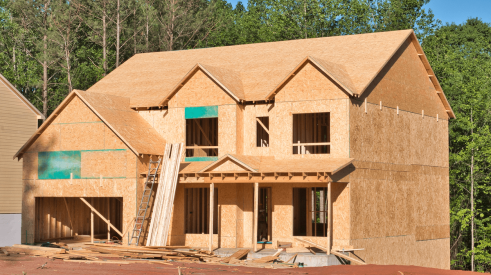 |
During the recent boom years, acquirers preferred to pay more cash at closing for dependable income streams. Now, with income streams less certain, acquirers will pay less at closing but potentially more over time, utilizing earnouts. A well-crafted earnout aligns the acquirer's interests with those of the retained management team. The acquirer pays for growth and income as it occurs, and the key managers are rewarded for delivering the profits they projected. Most sellers have done very well financially via earn-outs, but most agreements require continued employment to receive money. The earnouts vary in the amount of risk the seller shoulders.
Land HoldbacksThis popular structure sets some land aside from the initial closing, with an agreement on how lots will be streamed to the operation later, allowing the acquirer to favorably impact financial metrics — particularly return on assets — and manage the balance sheet. The seller typically earns the land development profit and is paid an interest carry. The holdback may be documented by an option or purchase agreement or just a first right of refusal. The price may be preset or determined in the future according to a stated formula.
Other HoldbacksThe holdback approach can be used for models, excess inventory, or even an extensive backlog. Again, the goal is to manage the balance sheet and improve the return on assets. A seller who projects hockey-stick growth may have a premium holdback for payment on homes delivered over a moderate growth threshold.
Tax ImplicationsAcquirers typically buy assets, not stock. Prior to this year, we were structuring favorable capital gains treatment for up to 90 percent of the transaction. In the shift to a buyer's market, we anticipate less advantageous treatment.
An important part of the favorable treatment was the handling of premiums paid at closing, assumed to be good will. Acquirers were closing transactions with large amounts of good will attached — despite heat from Wall Street — to add a new market or enhance their market position and add profits.
Previously flexible accounting rules regarding allocations of good will and write-downs of capital assets fueled the fire. Stricter accounting rules now prevent a number of practices for eluding the write-downs. We won't be seeing big premiums paid at closing. Additionally, the acquirer's auditors may require more premium be allocated to profits in the backlog on a percentage completion basis and to excess value in land. n
| Author Information |
| Jody Kahn Kline develops marketing materials for MPKA's seller clients as well as heads many assignments in which MPKA represents buyers. She provides market research support and identifies and screens prospects. |
Advertisement
Related Stories
Single-Family Homes
What Does It Cost to Build a Single-Family Home?
A closer look at the itemized costs in each stage of construction for a single-family home
Builders
A Look at the Boom in Home Builder Stocks During 2023
In 2023, stocks for the 10 biggest U.S. home builders outperformed the S&P 500. What does that say about the housing market?
Financials
Housing Demand Could Rebound in 2024 as Mortgage Rates Ease
The Mortgage Bankers Association predicts lower mortgage rates could bring homebuyers back into the market in 2024






